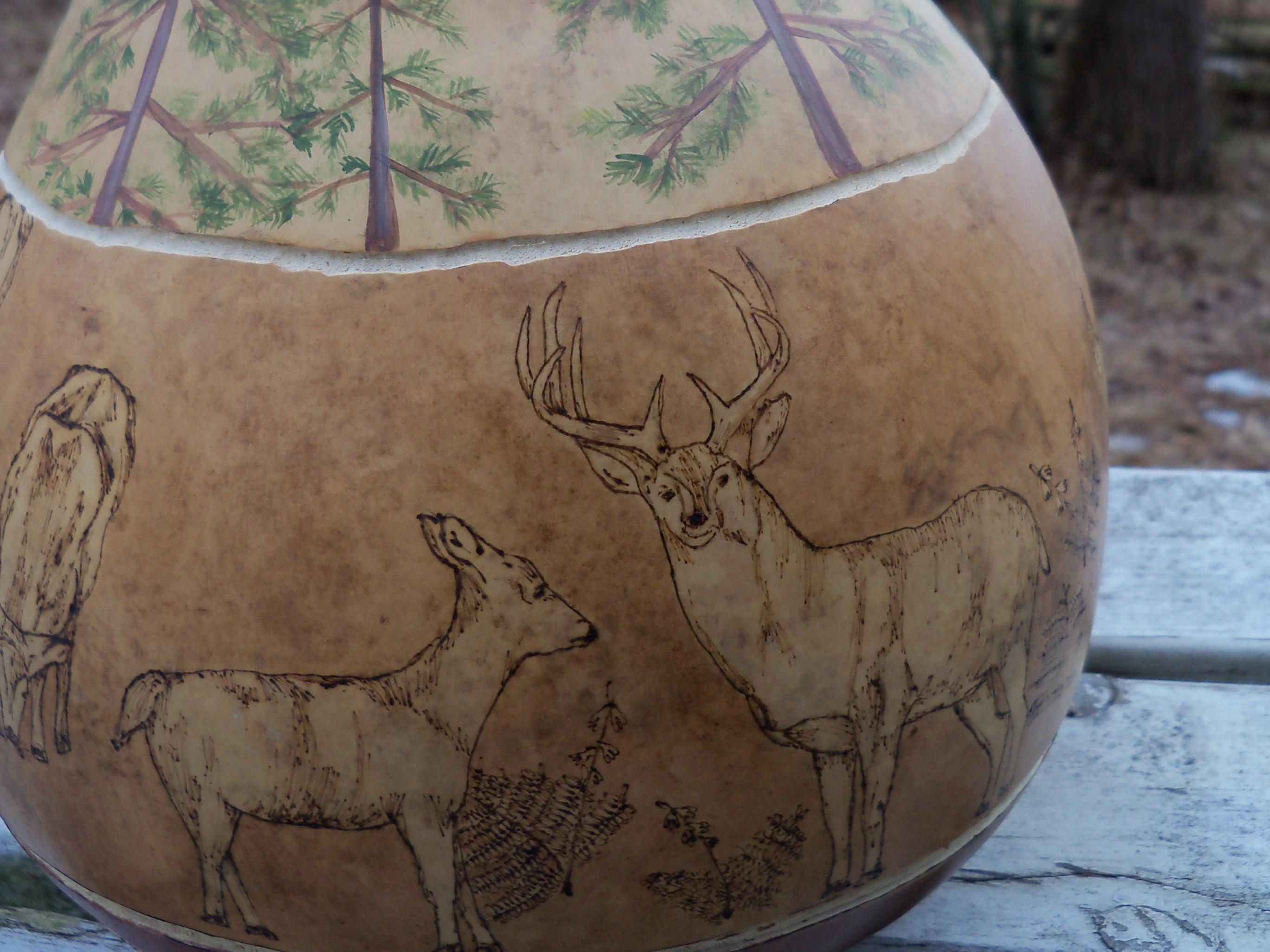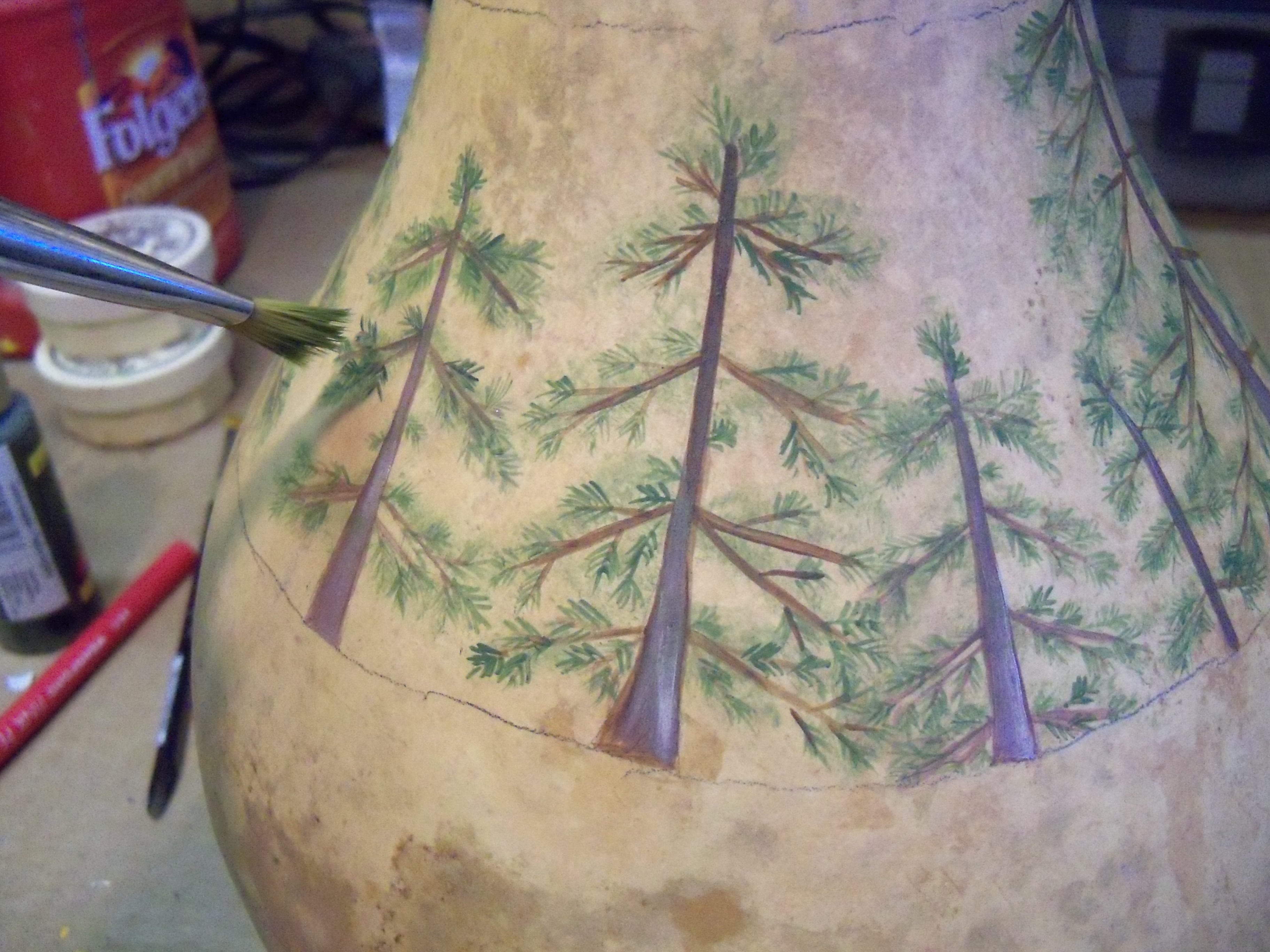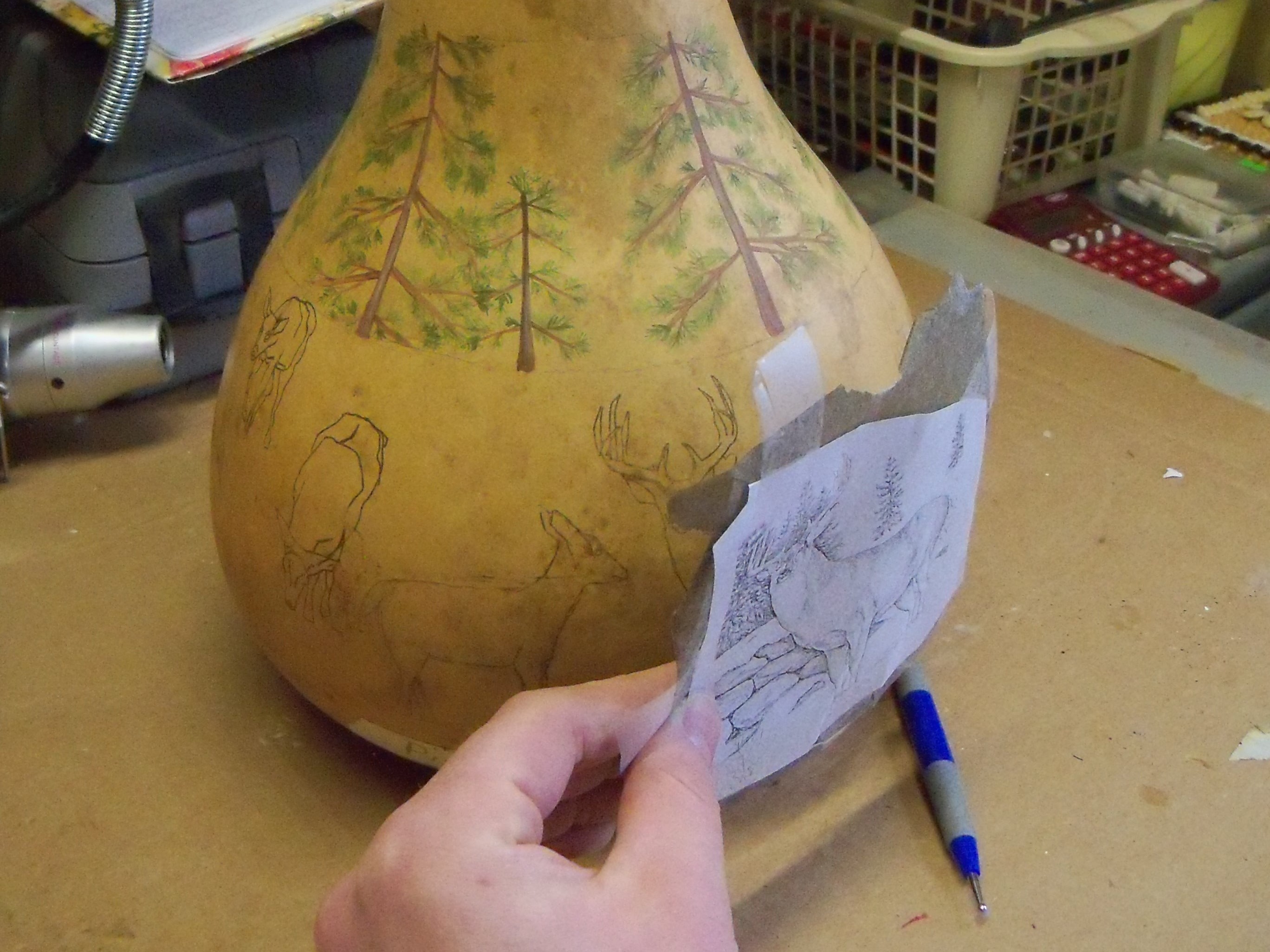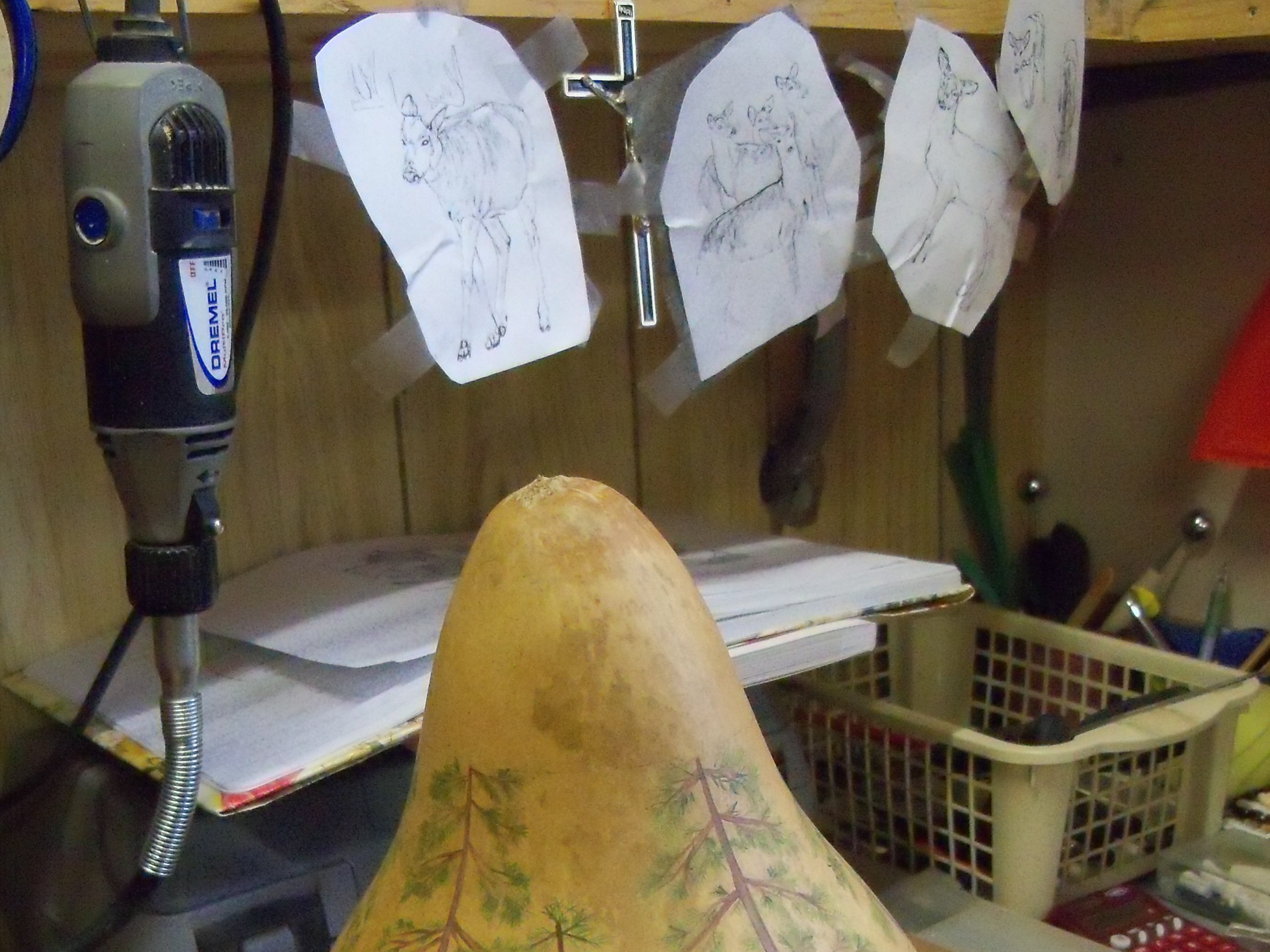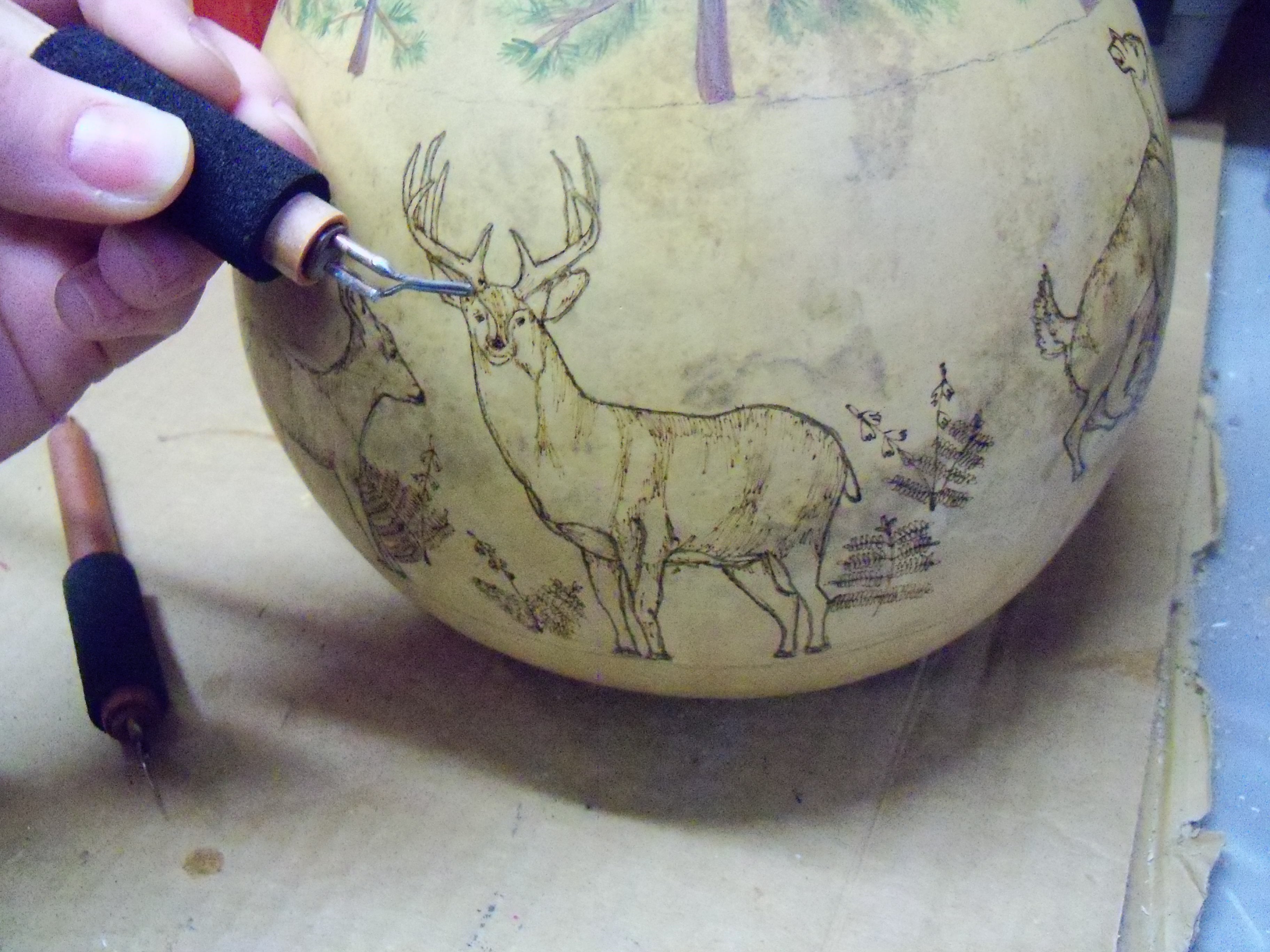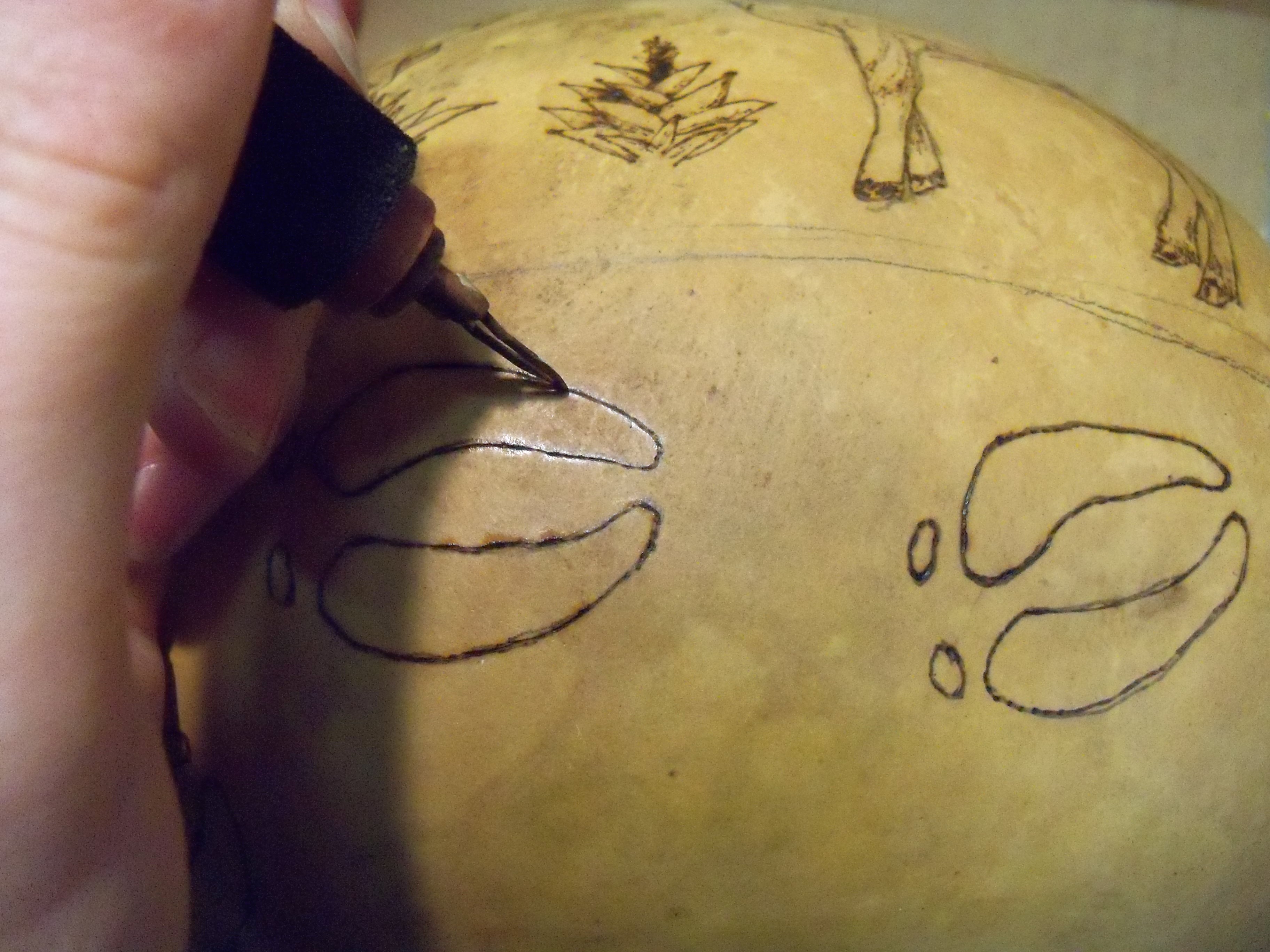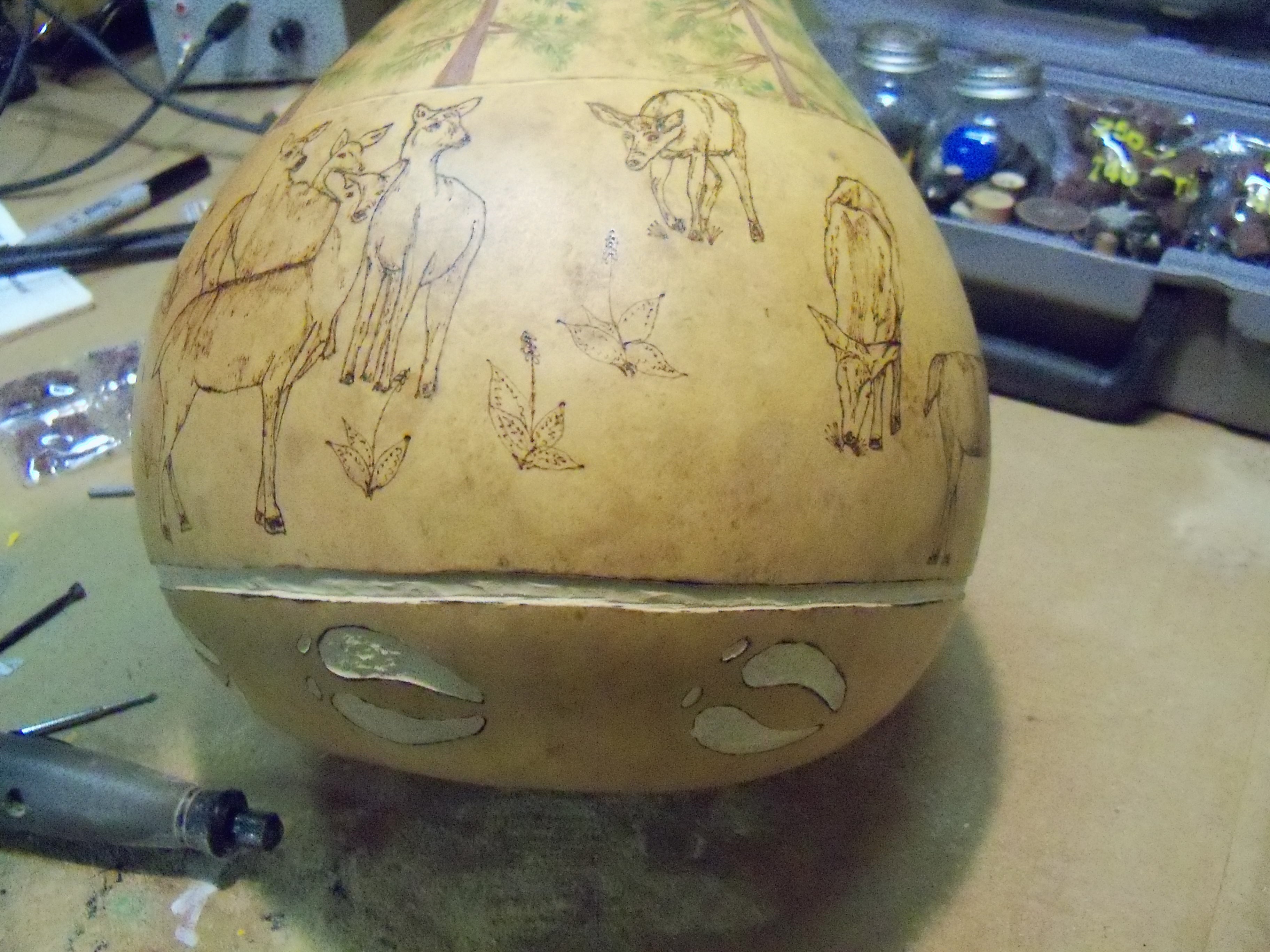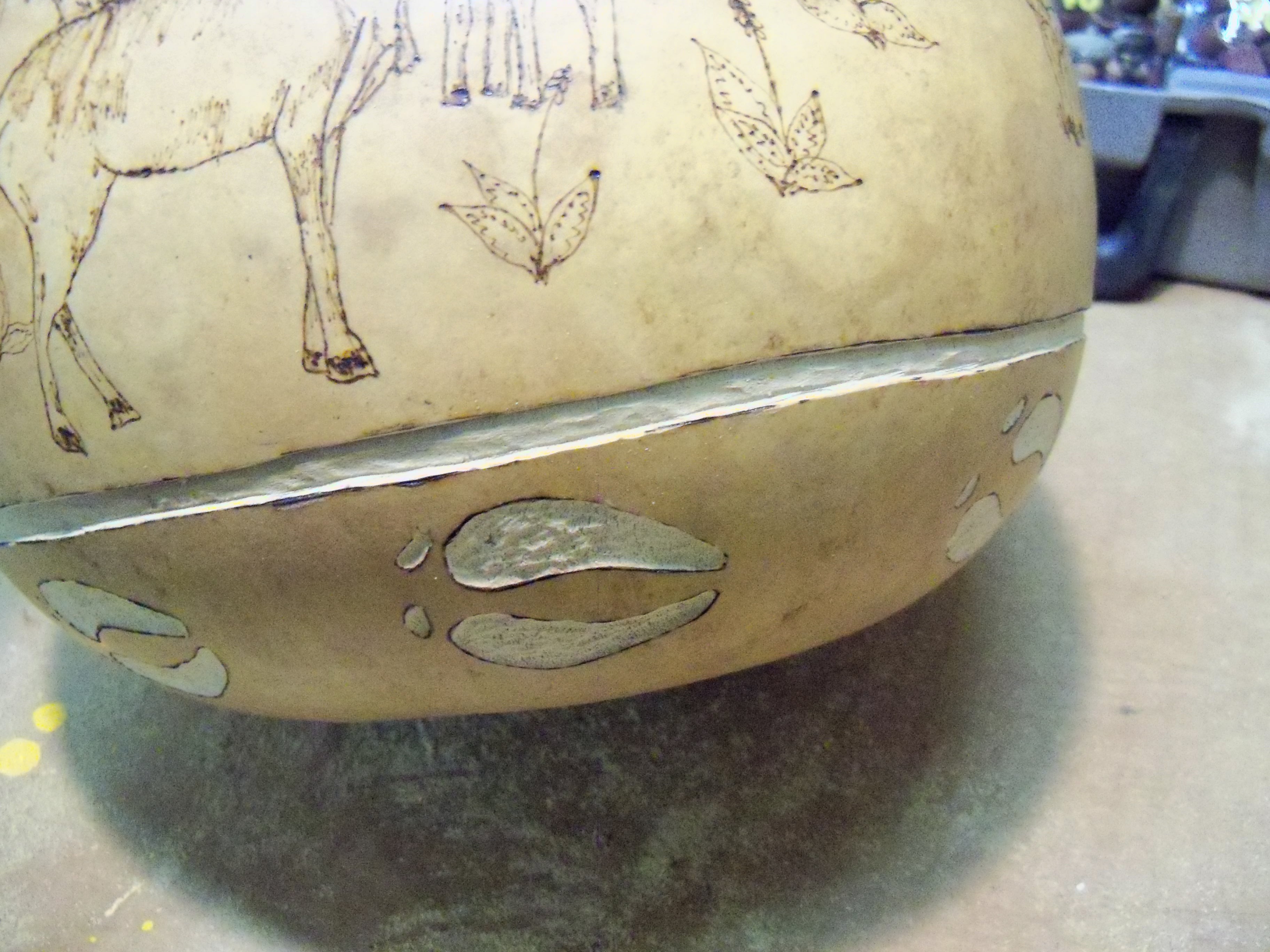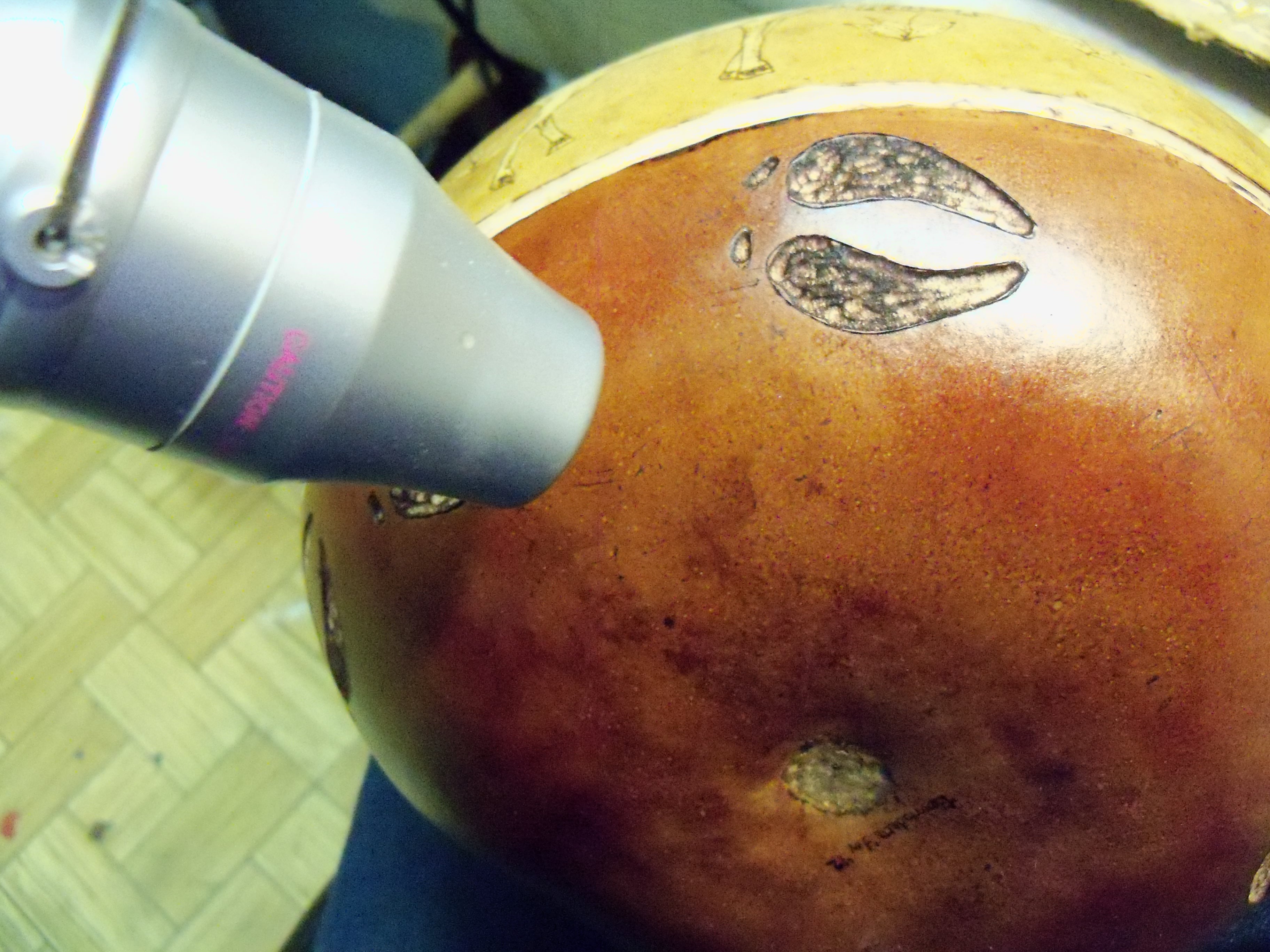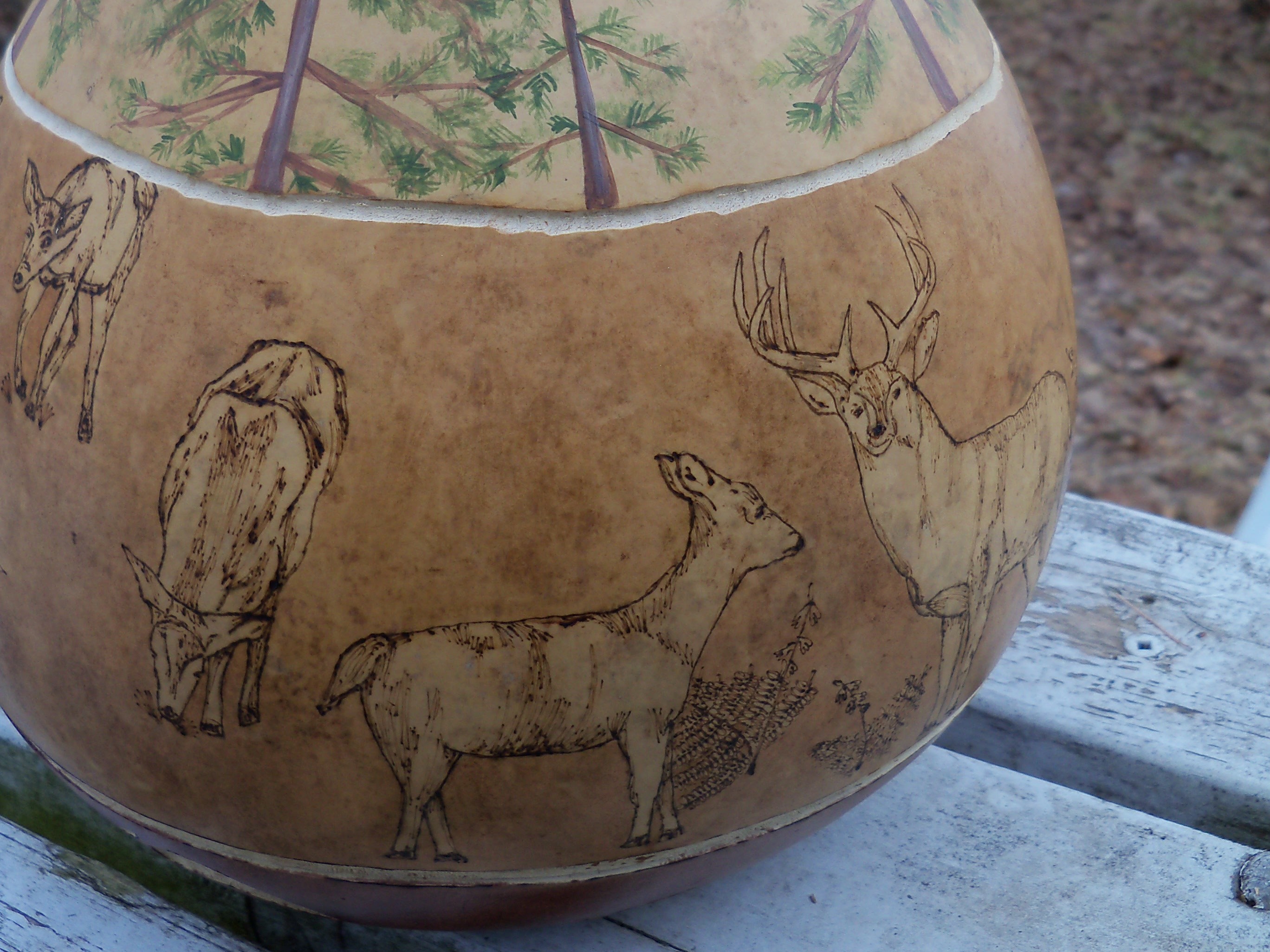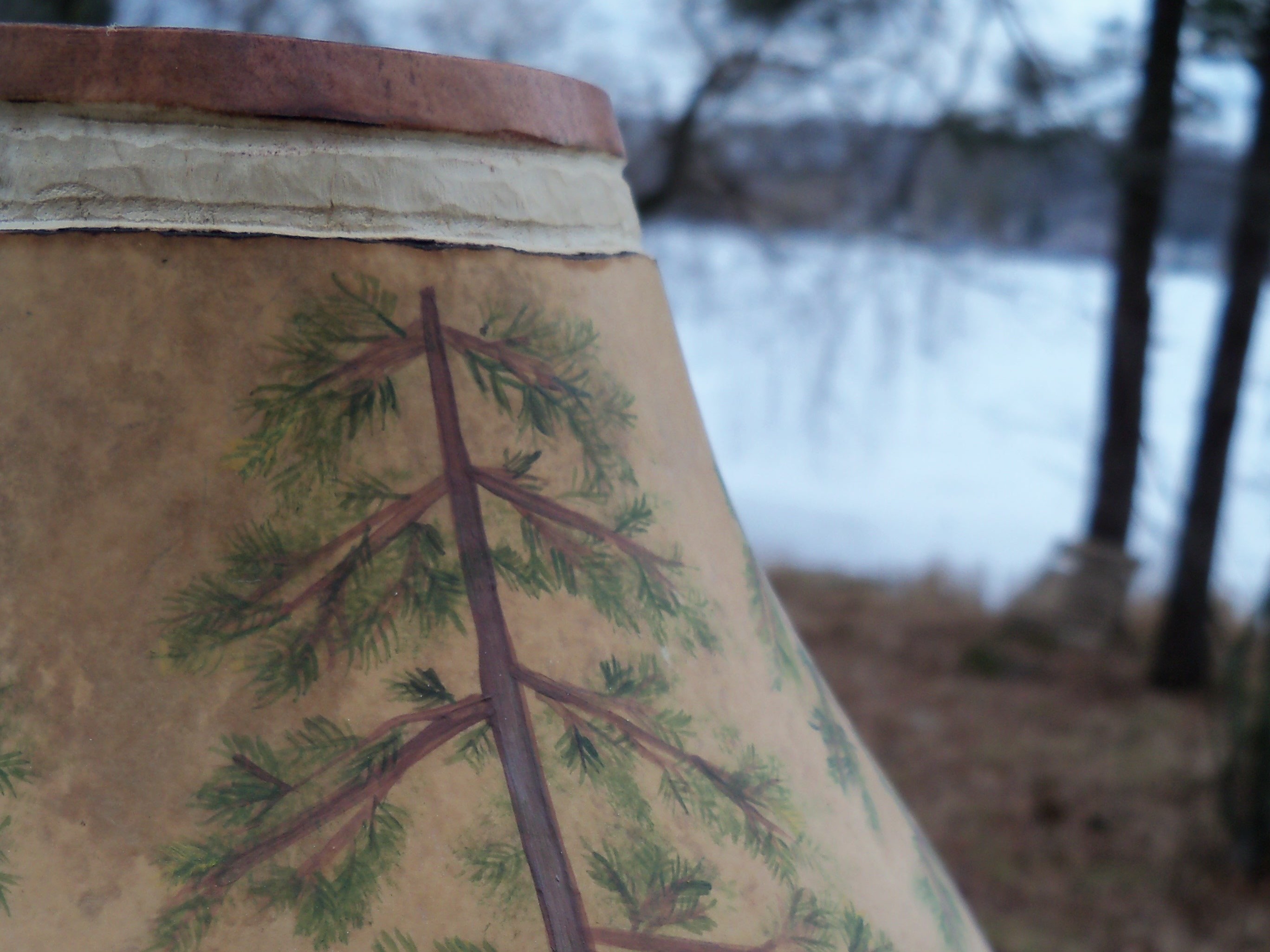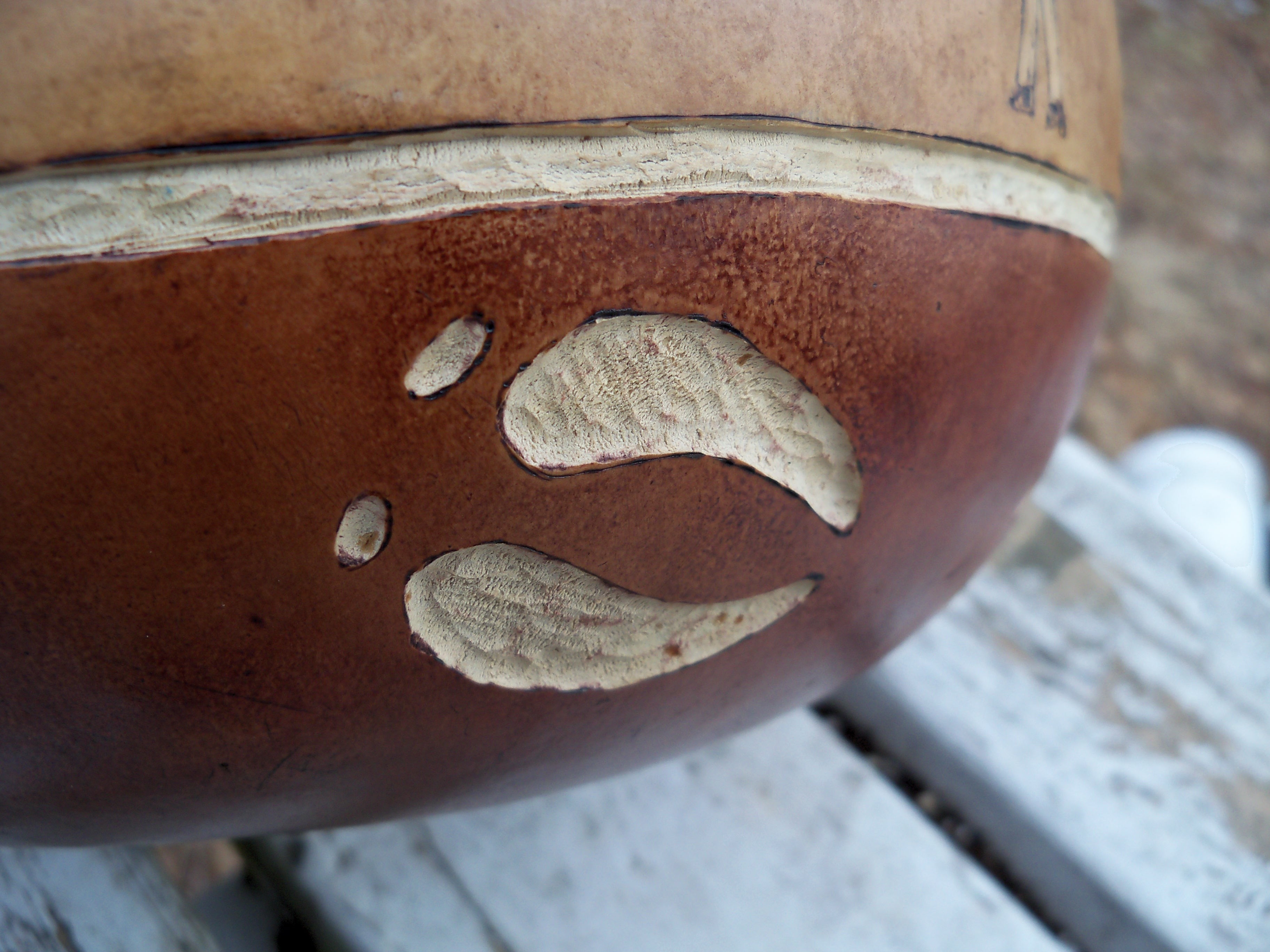You’ll hear me say it not once or twice, but perhaps a couple of hundred times: “Gourds are Nature’s Pottery, with nearly endless possibilities.”
I am a professional gourd crafter from Michigan where I grow my own gourds and craft with them for individuals, shops, and galleries. I love sharing my art with others, and I hope bringing my gourds to Make:Projects will start a gourd crafting movement here on Make.
I aptly entitle this gourd I crafted: “White Tailed Pine Gourd Pitcher.” I had lots of fun with this particular gourd and decided to take photos of the process. I’ll take you from painting to woodburning, and from carving to the finishing touches.
This particular project is not an extensive or detailed DIY, but rather I want to just scratch the surface of how I take a simple dried gourd and transform it into a piece of art. Of course, I can’t help but tell you how I did it all with lots of tips sprinkled throughout.
I show how to clean gourds on my YouTube channel. Watch how to clean the outside of a gourd here:


